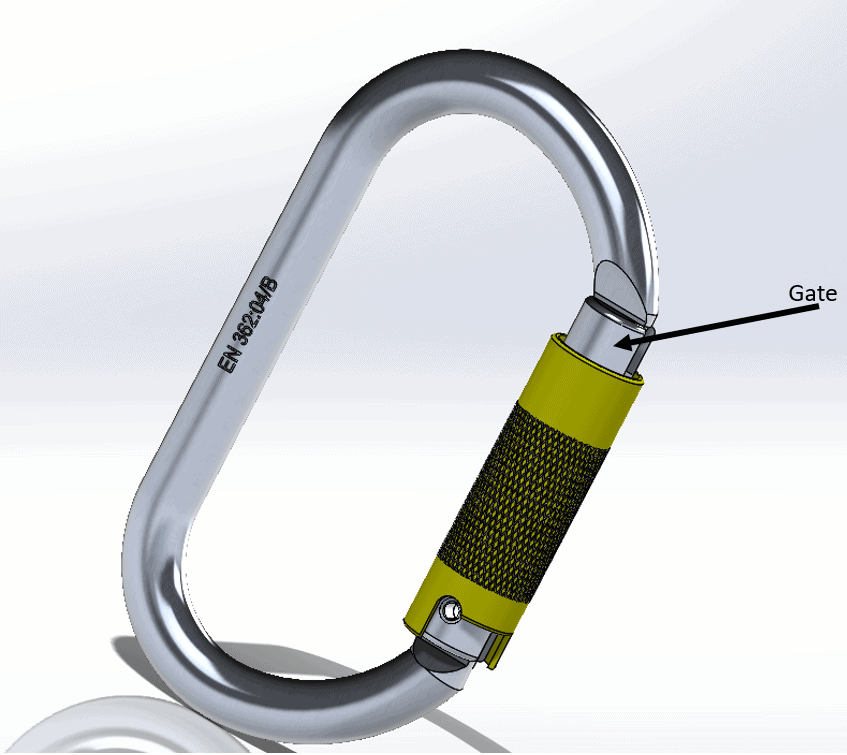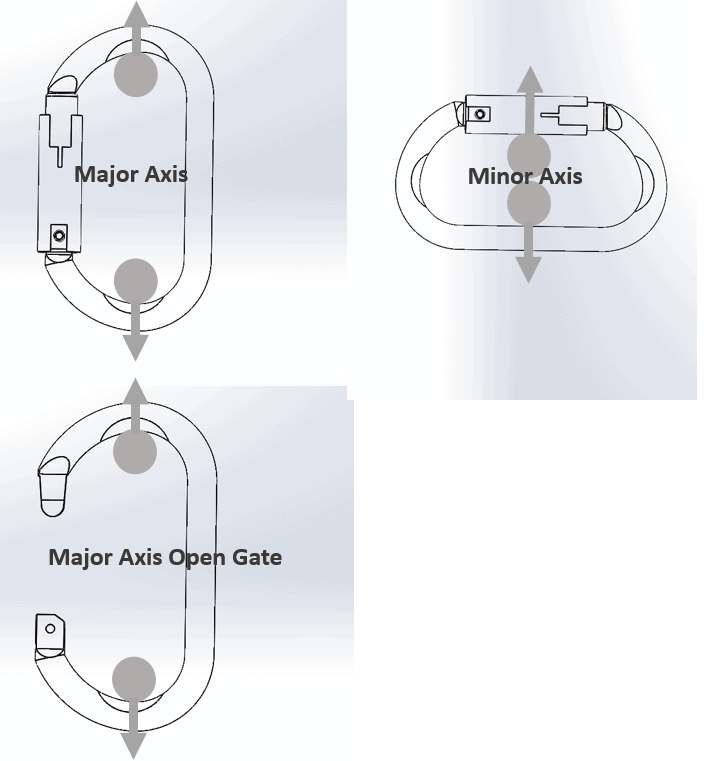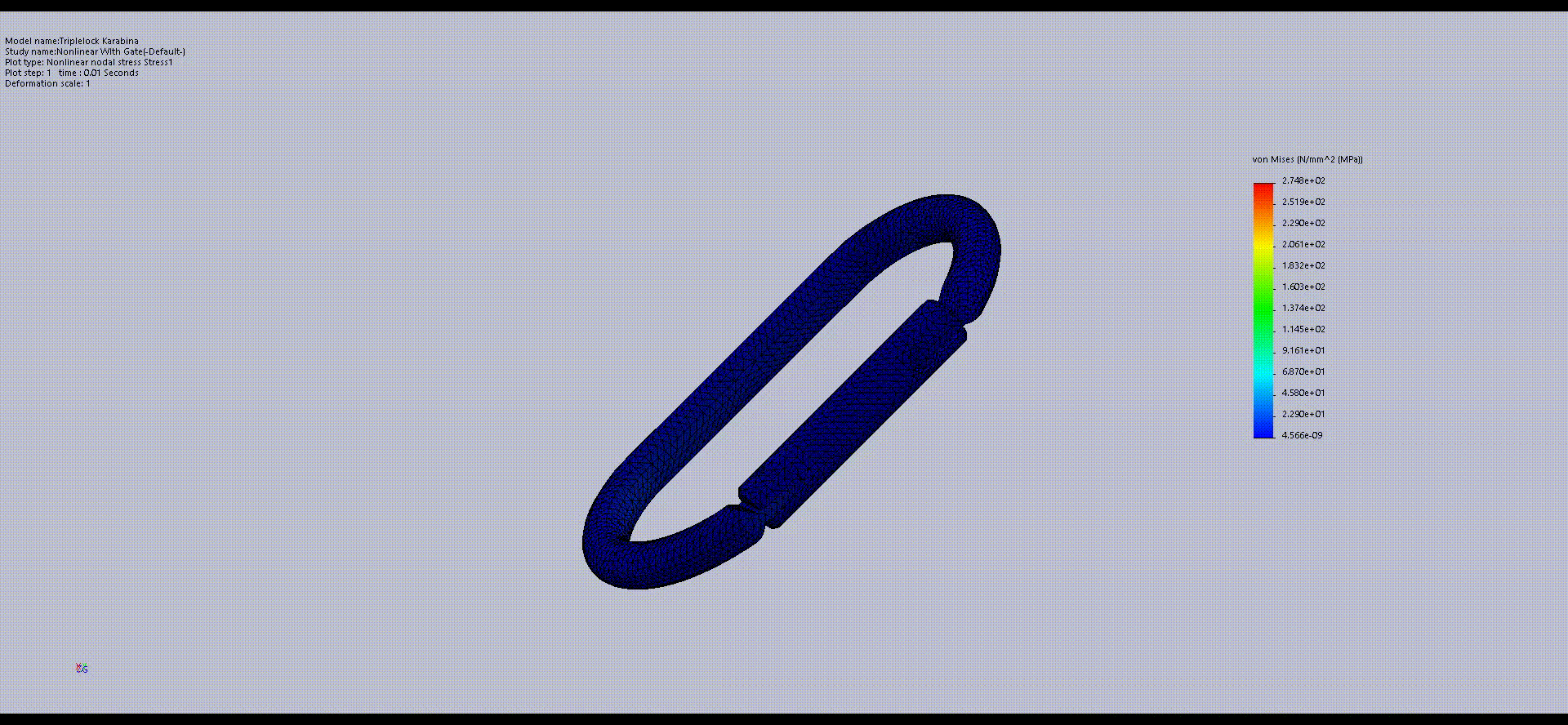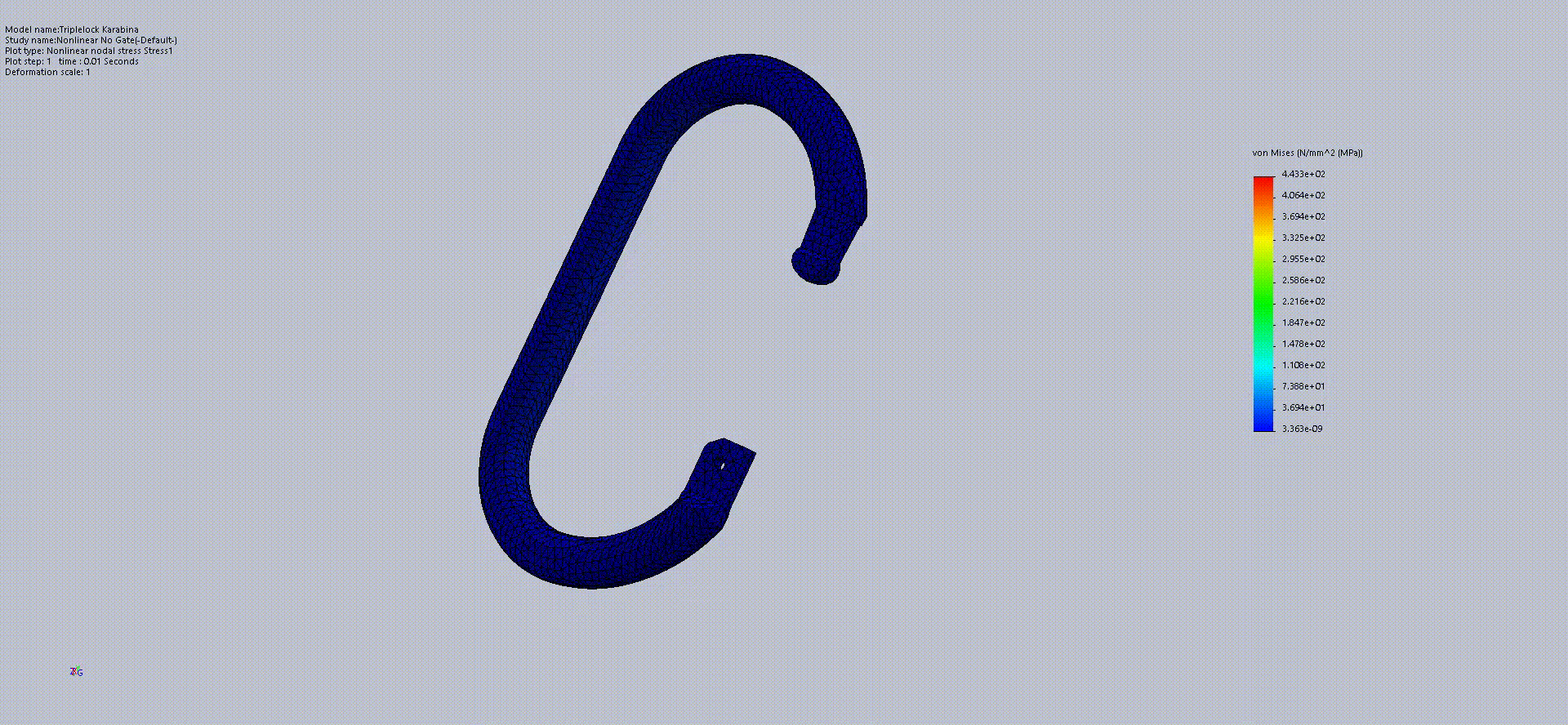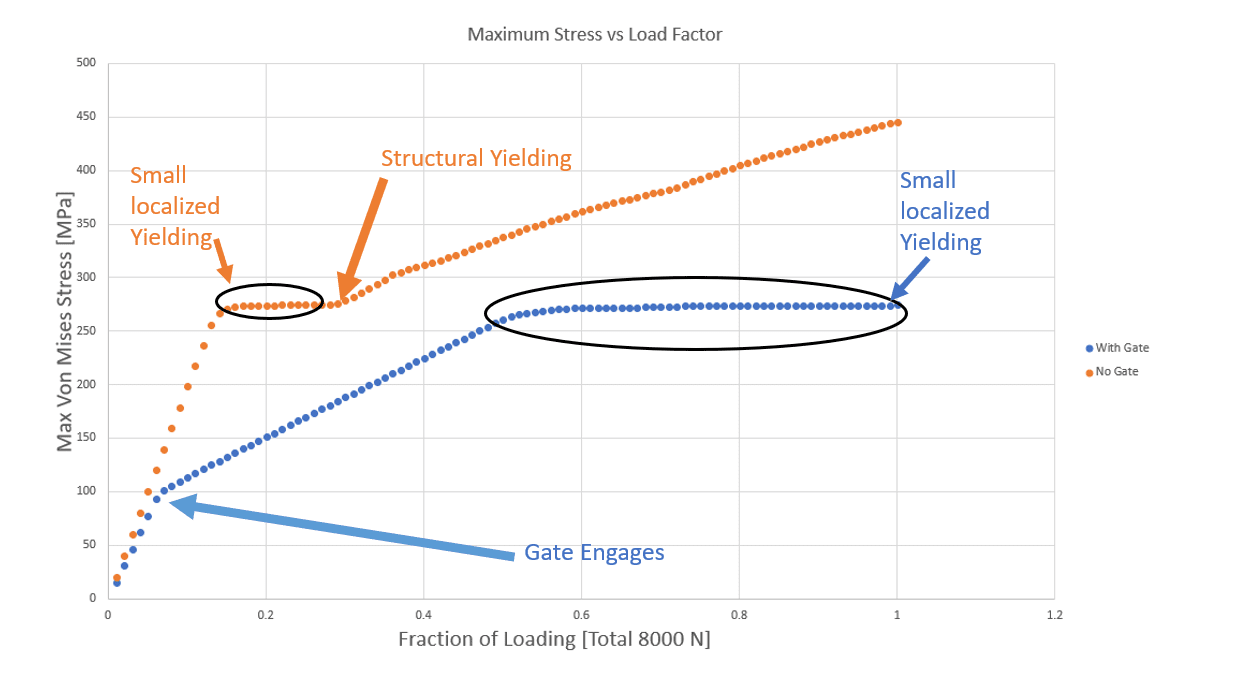SOLIDWORKS Simulation: Non-Linear Study of Carabiner Clip
I have always loved climbing, and at the heart of every climb is safety. The gear used should be strong enough to keep a climber safe through any sort of accident. A crucial piece of a climber’s gear is the carabiner. It is used to hook climbers to ropes, to hook ropes to an anchor, basically to hook anything to anything else. I have always been curious though, what would happen if the “gate” or the piece that closes and opens to let ropes thorough was stuck open during a shock load. (See pic below for “gate”)
Carabiners are tested extensively before they are released as a purchasable product including testing in multiple directions. There are some standards for testing carabiners, and they are usually rated based on these three tests: major axis tension with gate open and closed, and minor axis tension.
Each test has a specific strength associated with it. For more information on these tests and strengths, I recommend this blog:
For the sake of this blog, I am only concerned with the major axis tests. The study was an easy one to setup. I found a decent carabiner model for SOLIDWORKS Simulation and got to work. I removed the extraneous pieces of the model until only the main body and the gate remained. After some calculation, I added a virtual pin to hold the two together, and some split faces to apply the fixtures and loads to. Because the ropes that are applying the load have a decent amount of elasticity, it is safe to ignore any dynamic effects, so a nonlinear static simulation is in order.
Carabiners for basic climbing are typically made from a high strength, lightweight aluminum alloy. I chose a 6061 T6 Aluminum from the SOLIDWORKS materials database. The load was applied as an 8KN (kilonewton) force applied linearly through time. What I was looking for was any indication of added strength due to the latch catching.
As with any nonlinear study, it is best to start with a linear static study to ensure that the study is set up correctly before biting directly into the nonlinear study. My linear static results confirmed that some areas are exceeding the yield stress. In combination with the time-based loading, this confirms the need for a nonlinear study.
Using the copy study command, I can carry over all the boundary conditions, as well as switch to a Nonlinear study type. Once created, I set the time-stepping and solver type accordingly, and changed the material type to a Von Mises Plasticity Model with a post-yield Stress-Strain curve defined.
Below is the result with the gate latched.
Interestingly enough, with the new material model, the carabiner just barely touches the yield strength of 275 MPa (Megapascal) in this simulation. The gate latch catches early in the simulation and provides good stiffness to the model. We will look at the response plot later.
After this study finished, I copied the study again and excluded the gate from the analysis. Re-running the study provided some very dangerous looking results.
That is not what I would want to happen during a fall while climbing. The max Von Mises stress in the model went to nearly double it’s yield stress and the deformations are very high.
Below are response curves for the two studies:
As the loading begins, the two studies are identical until the gate latch engages on the study with the gate included. The structural response of the “With Gate” study becomes much stiffer after the gate latches and continues linearly at a much slower rate up until small localized yielding occurs.
As a result of these studies, I will definitely make sure that anytime I clip into a carabiner the gate is closed.
Thank you for taking the time to read this blog. For more like this, or to get a live demonstration, please reach out to your local Computer Aided Technology representative.
Matt Sherak
Application Engineer, Simulation
Computer Aided Technology, Inc

 Blog
Blog 